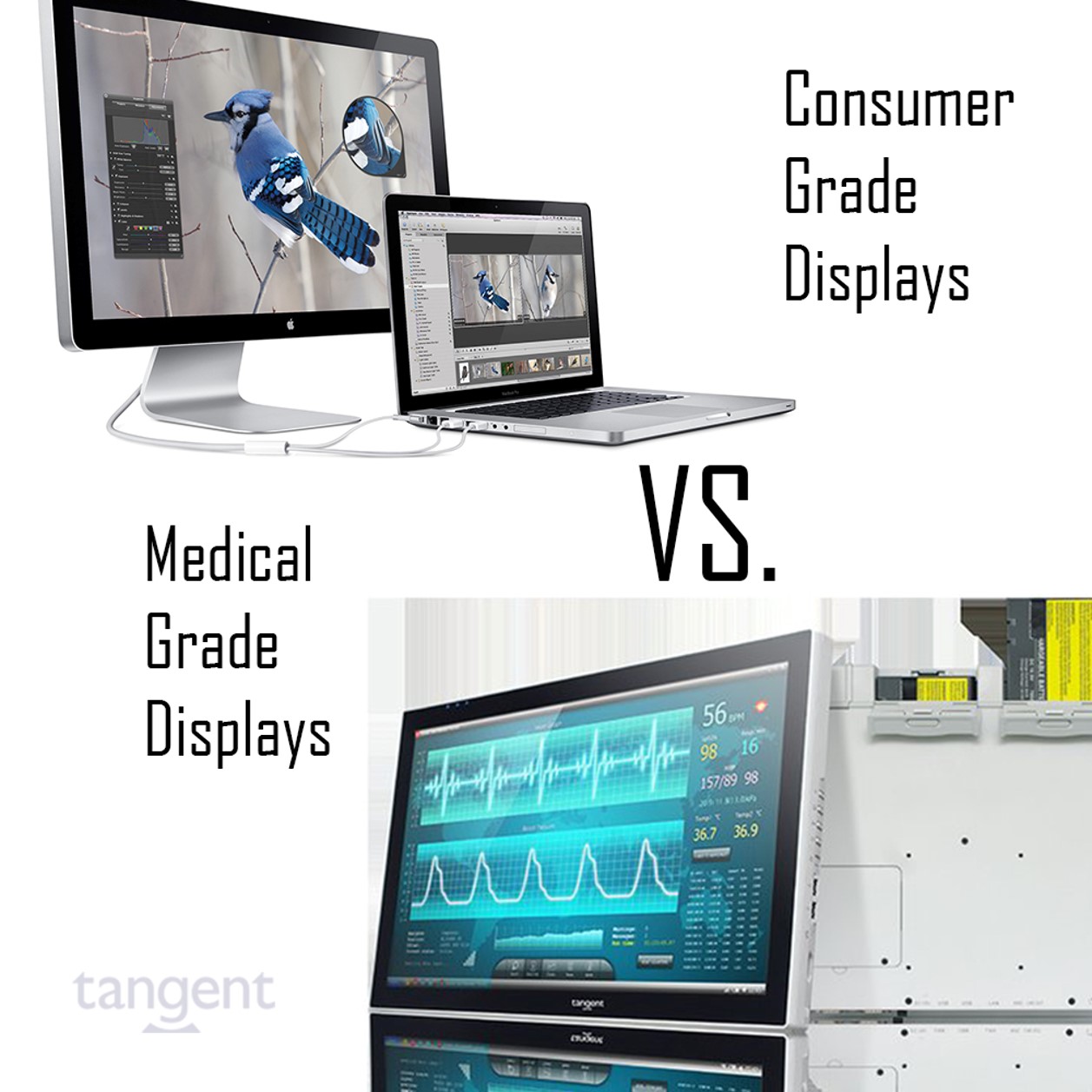The importance of selecting Medical Grade Displays for your Healthcare Application
Although there is a wide availability of display solutions to meet the demands of hospital and diagnostic requirements, not every solution can provide the quality, consistency, or longevity necessary for successful operation and patient satisfaction. Hospital staff often do a double take when they see the price tag for medical grade displays, and then the obvious question rears its head: what is the difference between consumer grade and high-end medical grade displays? While medical-grade displays are recognized for providing higher quality screens compared to to consumer-grade alternatives, advances in commercial off-the-shelf display technology paired along with lower prices have understandably drawn the attention of many health care professionals. Is there really a noticeable difference between the two? Much debate has surrounded the issue, but the answer comes down to a solid confirmation that, yes, there are discernible and important differences.
For one, medical grade monitors display more colors, about one billion colors compared to the consumer version that displays maybe around 16 million at best. Although the human eye is limited in how many colors it can see, providing more colors allows for greater accuracy, and doctors and surgeons use precise coloration-based assertions in medical procedures or when making a diagnosis. A minute difference is shades can make all the difference. Another major difference between medical and consumer grade displays is the automation of the backlighting system, also known as the luminosity. Medical displays have a closed-loop control circuit to maintain stable luminance from cold start to full operational temperature. A medical display’s automated system can continuously adjust the desired peak luminance several times a second. On a consumer grade monitor, one has to use the brightness control to adjust luminosity which is manually set without any reference to a correct level of luminance. A commercial display requires an unreasonable amount of manual calibration to provide the same consistency of a medical display. Another point of distinction is that the average certified medical display’s life span is generally rated to be four times longer than that of consumer displays.
So when considering all the factors of longevity, automated luminosity, and brilliant accuracy, a medical grade display is still miles and away more beneficial and cost effective compared to a consumer grade display. Tangent offers a 22″ Medical LCD monitor featuring a 16:9 aspect ratio widescreen display with PCAP 2-point touch screen, IP65 front panel and an antimicrobial enclosure. This medical display is certified with the EN/IEC 60601-1 standard of the National Fire Protection Association (NFPA) Health Care Facilities Code (NFPA 99), under which monitors used within a patient care vicinity can’t exceed leakage current levels of 100 microamps or more. With VESA 75 mounting, this 22″ Medical LCD display can easily be installed in a variety of healthcare environments and still maintain the quality and performance expected of a professional medical device. It’s very easy to be attracted to good prices and promises of quality, but true professional and health-oriented clients require the assurance and certified superiority of medical grade displays.
